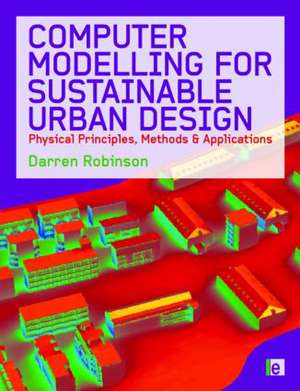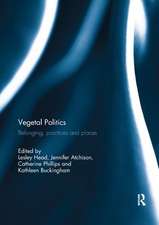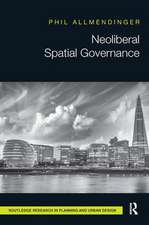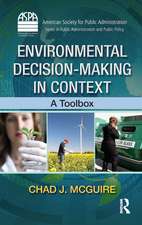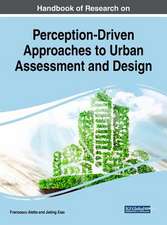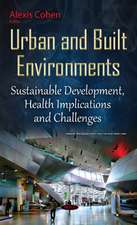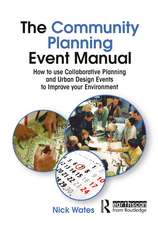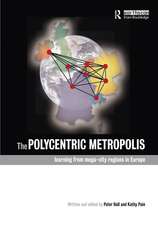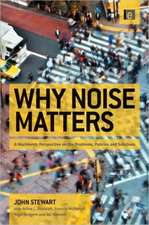Computer Modelling for Sustainable Urban Design: Physical Principles, Methods and Applications
Autor Darren Robinsonen Limba Engleză Hardback – 30 mar 2011
This book will be invaluable both in informing the next generation of urban planners, architects and engineers, and as a tool to current professionals that will directly contribute to the effectiveness of their work by allowing them to more successfully measure and model urban sustainability.
Preț: 774.81 lei
Preț vechi: 1109.02 lei
-30% Nou
Puncte Express: 1162
Preț estimativ în valută:
148.26€ • 158.54$ • 123.62£
148.26€ • 158.54$ • 123.62£
Carte tipărită la comandă
Livrare economică 18 aprilie-02 mai
Preluare comenzi: 021 569.72.76
Specificații
ISBN-13: 9781844076796
ISBN-10: 1844076792
Pagini: 320
Dimensiuni: 189 x 246 x 25 mm
Greutate: 1.04 kg
Ediția:1
Editura: Taylor & Francis
Colecția Routledge
Locul publicării:Oxford, United Kingdom
ISBN-10: 1844076792
Pagini: 320
Dimensiuni: 189 x 246 x 25 mm
Greutate: 1.04 kg
Ediția:1
Editura: Taylor & Francis
Colecția Routledge
Locul publicării:Oxford, United Kingdom
Public țintă
Professional Practice & DevelopmentCuprins
Figures, Tables, Box and Plates. Foreword. About the Authors. Acknowledgements. Acronyms and Abbreviations. 1. Introduction Part 1: Climate and Comfort 2. The Urban Radiant Environment 3. The Urban Hydrothermal Environment 4. Pedestrian Comfort Part 2: Metabolism 5. Building Modelling 6. Transport Modelling Part 3: Measures and Optimisation of Sustainability 7. Measures of Urban Sustainability 8. Optimisation of Urban Sustainability Part 4: An Eye to the Future 9. Dynamics of Land – Use Change and Growth 10. Conclusions
Notă biografică
Dr. Darren Robinson is Professor of Building and Urban Physics at Nottingham University and a recipient of the CIBSE Napier-Shaw Medal, the IBPSA-UK Young Persons' Award and the Building and Environment Journal Best Paper Award (twice).
Recenzii
'There are many books that provide case-studies of urban design projects that meet narrow sustainability objectives, however there are few that provide a comprehensive assessment and none that provide tools to evaluate urban development projects. This book is 'one of a kind'. It represents an audacious endeavour to set out the physical basis that must underpin sustainability at the urban scales relevant to urban designers. Most importantly, it demonstrates computational tools that allow urban decision-makers to assess the sustainability of urban design options.' Dr. Gerald Mills, Senior Lecturer, University College Dublin; President, International Association for Urban Climate
'Impressively detailed and well researched, this should become an essential reference book for researchers and planning professionals concerned with urban sustainability.' Dr. Simos Yannas, Architectural Association Graduate School
'Tools that allow us to make well-informed decisions are essential to shape future cities. This valuable book points the way.' Ivan Harbour, Senior Director, Rogers Stirk Harbour + Partners 'This authoritative and impressive book is very timely and welcome.' Peter Head, Director and Chair of Global Planning, Arup. '
A must-read for anybody interested in modelling the environmental performance of cities.' Prof. Christoph Reinhart, Graduate School of Design, Harvard University
'Impressively detailed and well researched, this should become an essential reference book for researchers and planning professionals concerned with urban sustainability.' Dr. Simos Yannas, Architectural Association Graduate School
'Tools that allow us to make well-informed decisions are essential to shape future cities. This valuable book points the way.' Ivan Harbour, Senior Director, Rogers Stirk Harbour + Partners 'This authoritative and impressive book is very timely and welcome.' Peter Head, Director and Chair of Global Planning, Arup. '
A must-read for anybody interested in modelling the environmental performance of cities.' Prof. Christoph Reinhart, Graduate School of Design, Harvard University
Descriere
This book introduces the physics of urban sustainability and explains how urban sustainability may be modelled and optimised. Starting with an introduction to the importance and key aspects of the topic, it moves on to a detailed consideration of the urban climate and pedestrian comfort. Comprehensive techniques for the modelling and optimisation of urban metabolism are then described, together with means for defining sustainability as the fitness function to be optimised. An invaluable resource for current and future urban planners, architects and engineers.
